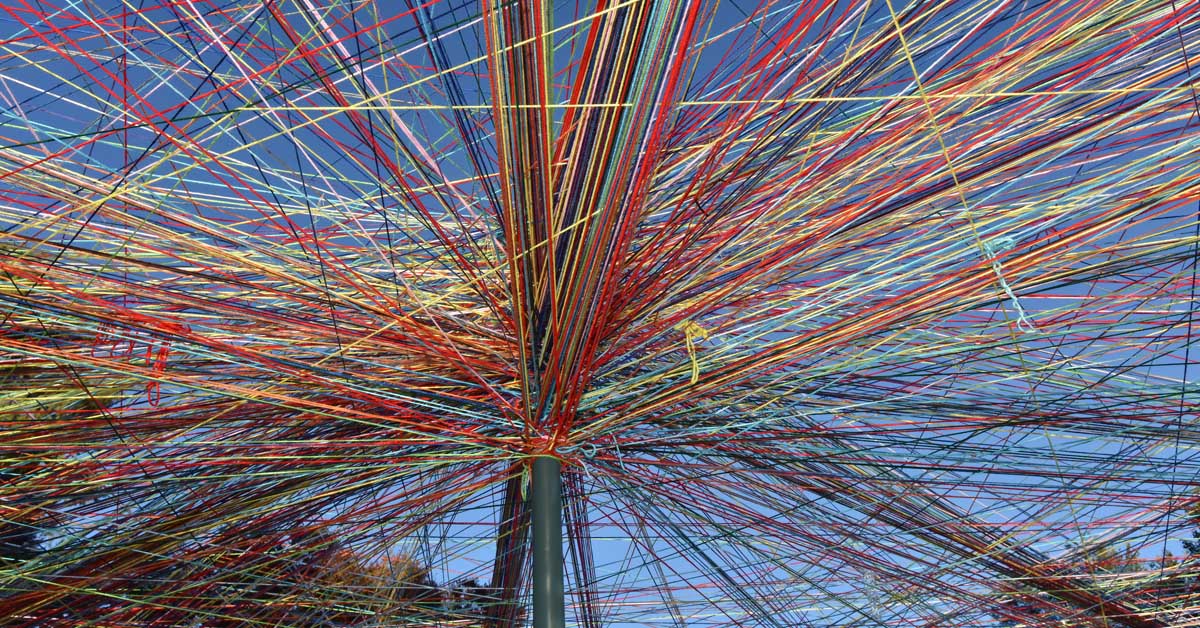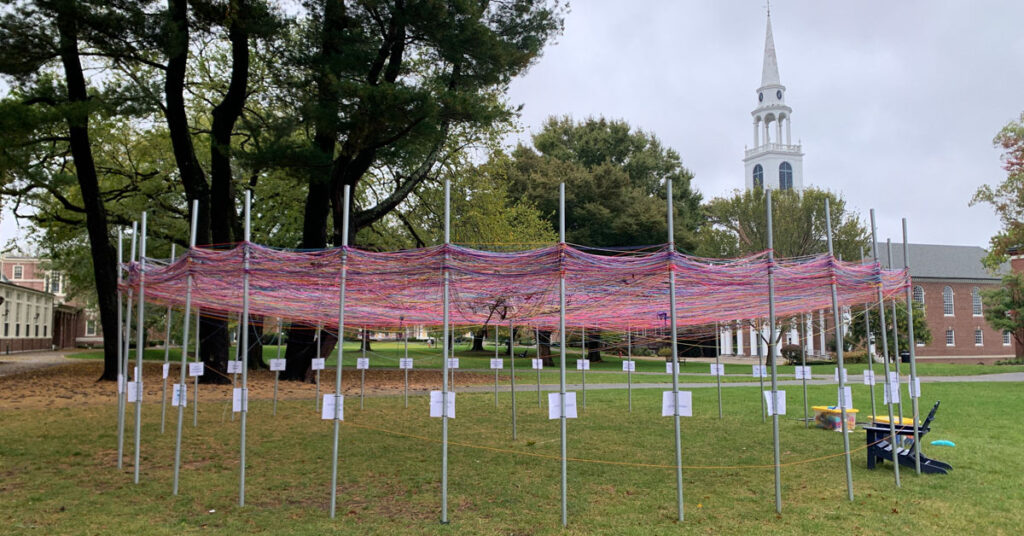For everyone, made by everyone

Community collaborates on the Unity Project, a striking public art expression
Woven together and suspended in the air, a kaleidoscopic web of yarn forms a canopy through which sunlight filters to the ground on a corner of the Dimple. From below, it is possible to pick out individual strands, but like viewing a crowd from a distance, the material merges into a large, multi-colored skein.
“Basically, it’s an expression of the college’s collective identity,” said Wheaton Professor of Art Kelly Goff, facilitator of the latest re-creation of the Unity Project.
The structure offers a visual reflection of the community, illustrating our commonalities and connection as well as difference. Fittingly, the process of creating the piece occurs through communal effort.
Virginia artist Nancy Belmont conceived of the project in 2016, responding to the country’s divisive political climate. Communities across the country, including Wheaton, followed suit.This year’s edition marks the fourth time that the college joined together over a four-week period to manifest its own Unity Project.
Near the library, Goff and students positioned 10-foot poles in a 36-foot circle with an extra pole in its center. Each outer pole holds a sign with a personal identifier—“I am a student,” “I have a spouse or partner,” “I am of Asian descent,” “I am a survivor,” or “I believe in a higher power(s).”
Participants selected a skein of yarn of any color, connected one end high up the central pole, then wrapped their line of yarn around each outer pole marked by labels with which they chose to identify.
Selecting an identifier, such as “I consider myself an introvert” or “I consider myself politically liberal,” required participants to contemplate how they see themselves or how others may see them.
“For one person an identifier could be something that you’re extremely proud of, but for another person who checks that same box, it could be just a tiny part of their identity,” Goff explained. “It leads to these interesting conversations. That’s one of the things I love about it.”

Students shared several thoughts about what they enjoyed and/or learned from their involvement. To facilitate participation, student ambassadors encouraged individuals passing by the structure to add their story.
Alba Medina ’26 of New York City, served as a student ambassador. “This created a way for all identities on campus to be heard,” said Medina. “I’ve noticed that people will chat with one another or they’ll wrap the yarn around the same pole and someone else, it’s inviting conversation.”
Nora Harrell ’29, from Billerica, Mass., said, “We are all interconnected, and it was enjoyable to see all the ways that my various identities and experiences overlapped with and differed from my peers.”
Some participants, such as Kiera Tramble ’29 of Medford, Mass., marveled at the project’s growth. “The process of connecting yarn from the center pole to the outer poles represents the way each person’s identity connects to another on campus,” she said. “Watching the web expand each day while walking to class was a visual reminder of how diverse experiences can coexist to form a unified whole.”
Student ambassador Earl Denis ’26 of St. Lucia agreed. “[As the project grew] I started to see the beauty in the art. The different colors of the strings looked appealing during the day and the amount of strings now looks like it could hold up a person,” he said, enjoying how it brought students together. “I learned that there are many different identities, but when they find a way to connect something beautiful emerges.”
After nearly a month the collection of the paths of yarn for hundreds of individuals created a thick and colorful tapestry, uniting the differences of the community. “This is a good example of community-based, participatory public art,” said Goff. “It’s for everyone, made by everyone.”
